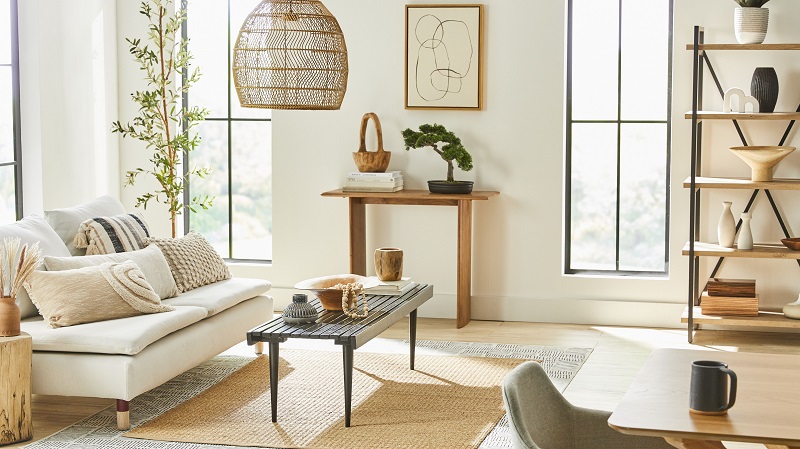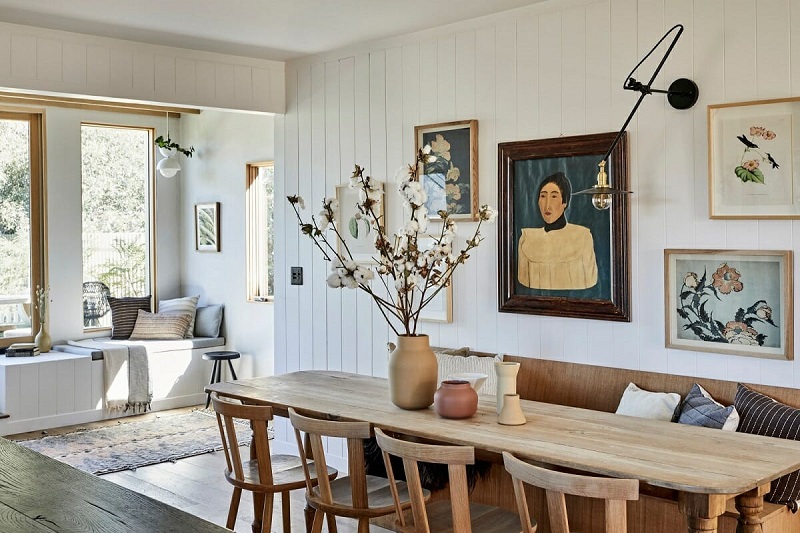Transforming your house with a simple, relaxing, and elegant atmosphere is the purpose of “japandi” decoration. This model gives an opportunity to craftsmanship, minimalism, and nature.
The serenity provided by the japandi style is achieved thanks to the simplicity that characterizes this type of art. It is a trend that seeks the sobriety of the environment using simple elements.
Japandi is one of the most followed types of decoration today, due to the philosophical basis on which it is based. The premise is to provide homes with the benefits of oriental aesthetics with other cultures.
By the way, the atmosphere of this kind of arrangement is linked with tranquility and peace of mind. He continues reading and discovers the reasons.
What is the “japandi” style?
The japandi trend results from the fusion of Japanese and Scandinavian styles. The purpose of these decorations is to offer minimalist spaces, following the wabi-sabi philosophy. This ideology is essential in Japanese aesthetics, governed by good taste and beauty, as reported in an article by BBC Mundo.
The key to the style is to turn imperfection into perfection, relying on handcrafted, functional, and natural pieces. The objects that a japandi project contemplates show clean lines and neutral colors. This type of Japanese interior design wants you to find at home the opportunity to relax in a Zen space, which rescues you from daily pressures, relaxes, and de-stresses.
As for the Scandinavian influence, it pursues the use of corners and the advantages of lighting. It also takes advantage of white paintings, so that the rooms highlight neatness and increase natural light.
How to adapt the decoration of your home to the “japandi” style?
The Superior School of Design of Barcelona points out that the decoration of space implies choosing furniture and accessories that add aesthetic value to the final appearance. Behold the meticulous selection of textures, colors, and shapes that combine with each other.
Based on these premises, the japandi trend revolves around 3 keys:
- Originality: it is the personality that receives the style and depends on who executes it.
- Simplicity: Minimalism is the forte of japandi art. According to the Universidad de Oriente, the foundation of the minimalist current is to reduce to the essentials and get rid of what is not useful.
- Neutrality: the discretion of Scandinavian colors is paired with the explosion of strong Japanese pigments. The bases or backgrounds are usually neutral, while the earth palettes provide a striking touch.
The japandi style detaches itself from clutter and sticks to clean components. Adapt it to your home with the following recommendations.
Includes crafts
The japandi prefers what does not come from industries to increase the feeling of home. In addition, the handmade objects have a raw finish that is relaxing to the touch. Here are some suggestions for living rooms, bedrooms, and other rooms:
- Mirrors.
- Sculptures.
- Natural fiber chairs.
- Light wood furniture.
- Bamboo or stone pieces.
- Simple frame pictures
- Ceramic vases and ornaments.
- Cushions made with linen textiles.
In the japandi trend, it is necessary that the spaces show fluidity. Remove the objects that hinder the passage, bother the view and unbalance the energies that surround the house. It is the way in which said decoration is linked to feng shui.
The delimitation of areas must be clear and it is pertinent to combine the size of the furniture so that they do not exceed the area destined for them. So that there is no complete divorce between the elements that make up the rooms, install paper screens, sliding wooden doors, or slatted dividers.
Introduce indoor plants
Incorporating plants inside the house is favorable for inspiration and relaxation. Complying with the precepts of oriental and Scandinavian decoration, the pots you use have to be simple and light in color. Leave the green to the leaves and discard the multi-colored flowers.
As Japandi plants, the focus, the birds of paradise, and the vines stand out. It is important that there are few copies; one is enough.
Contrast colors
Beige, pastel green, gray or white colors predominate on the walls, but it is possible to contrast with the rest of the decoration. In the kitchen island, you could add a little dark wood. In the room, it is not unreasonable that the furniture cushions are soft blue, olive green, or brown.
Use natural fibers
Sand-toned fabrics are perfect for bedding or blankets that adorn furniture. Jute and wicker are ideal options for tablecloths, baskets, and pots.
Cleans and aromatizes
Both cleaning and fragrances are part of the setting. Both complement the fresh and relaxing atmosphere that is breathed in a japandi room. It is advisable to use cleaners whose perfume is made of natural extracts, such as lavender, cinnamon, pine, and jasmine.
Relationship between the “japandi” style and emotions

Japandi decoration is related to emotional decoration. It means that it is focused on transmitting positive energies through the distribution and arrangement of spaces so that the person obtains greater comfort and security where they live.
The advantages of this type of art transcend the aesthetic. They address the well-being of the mind, as proposed by the Japanese trend.




